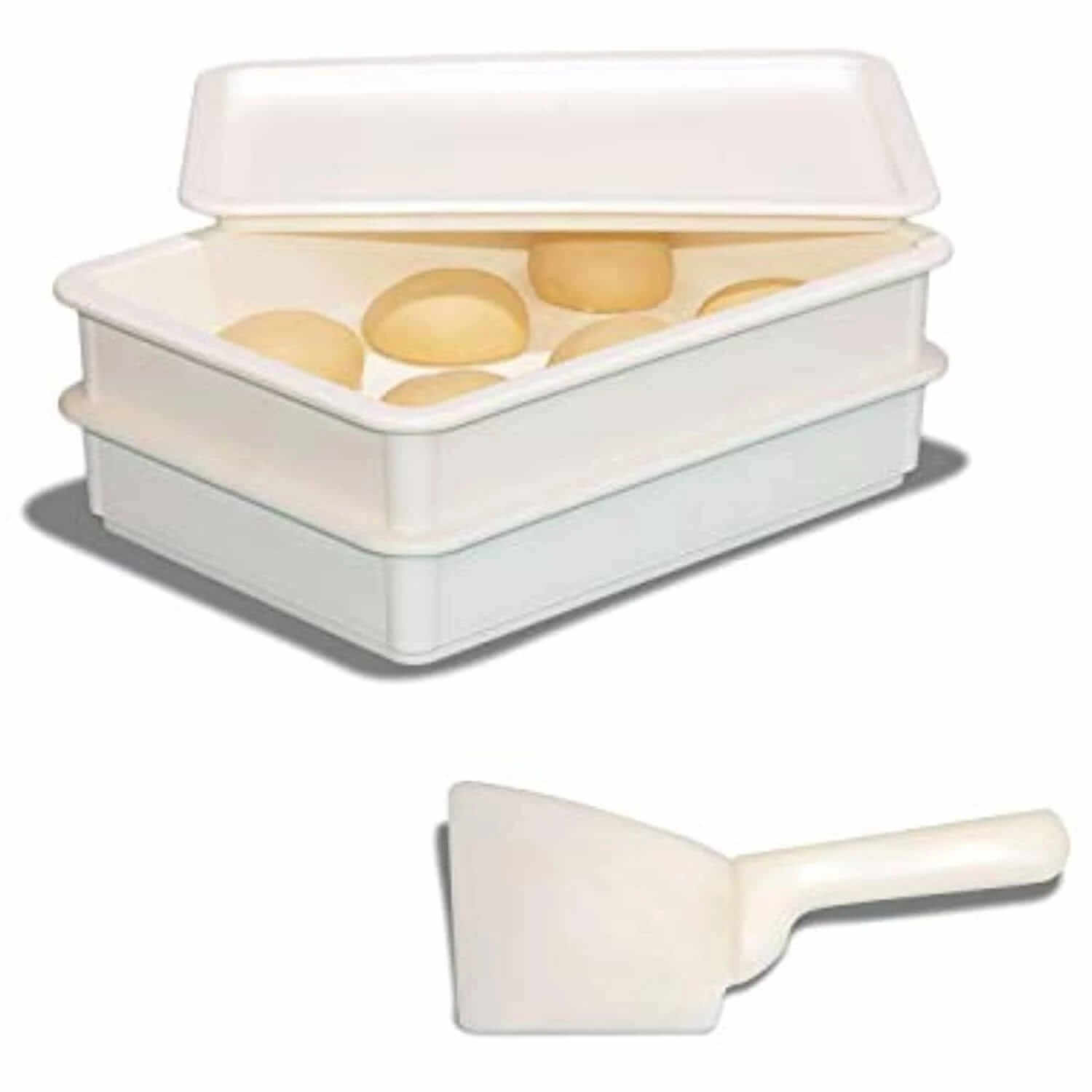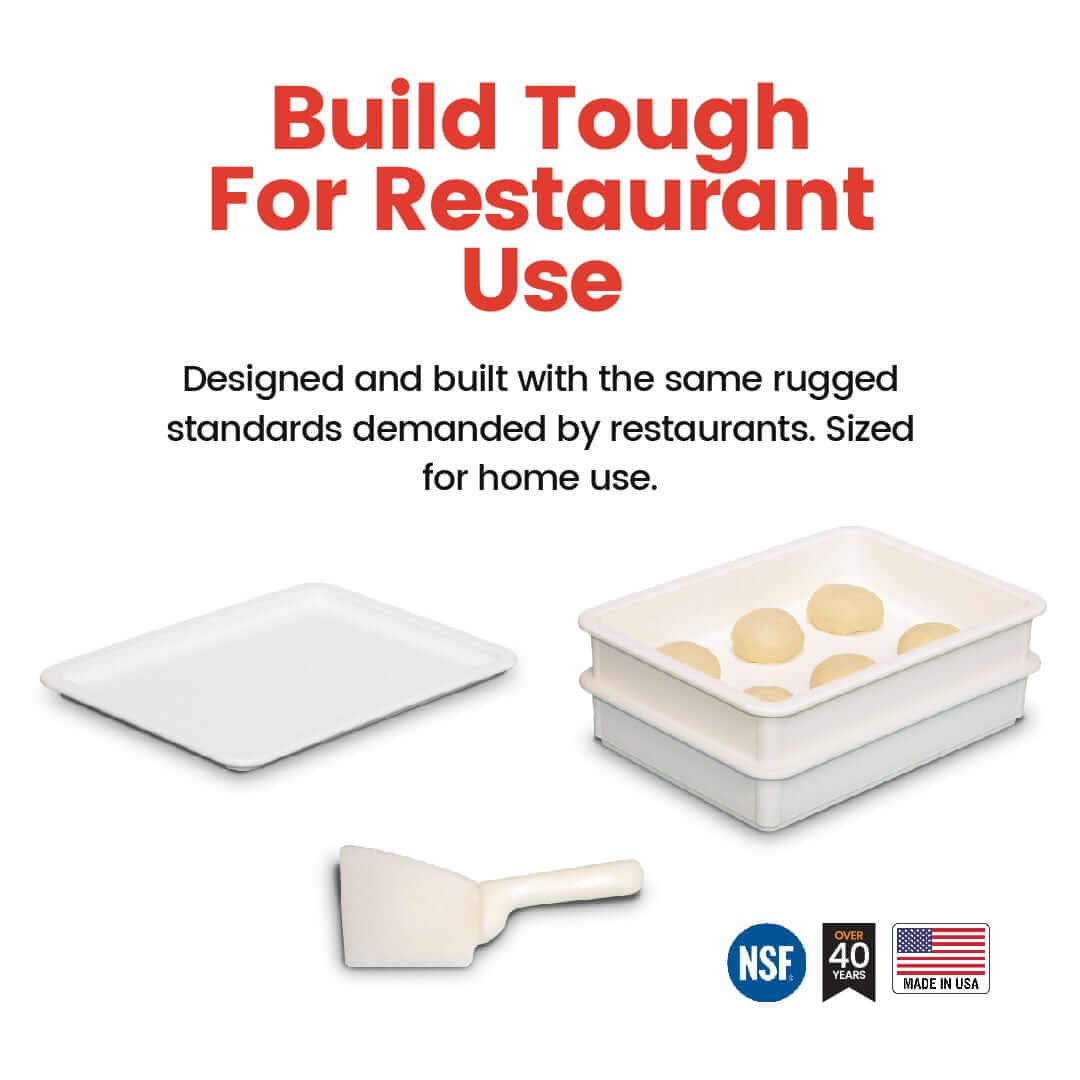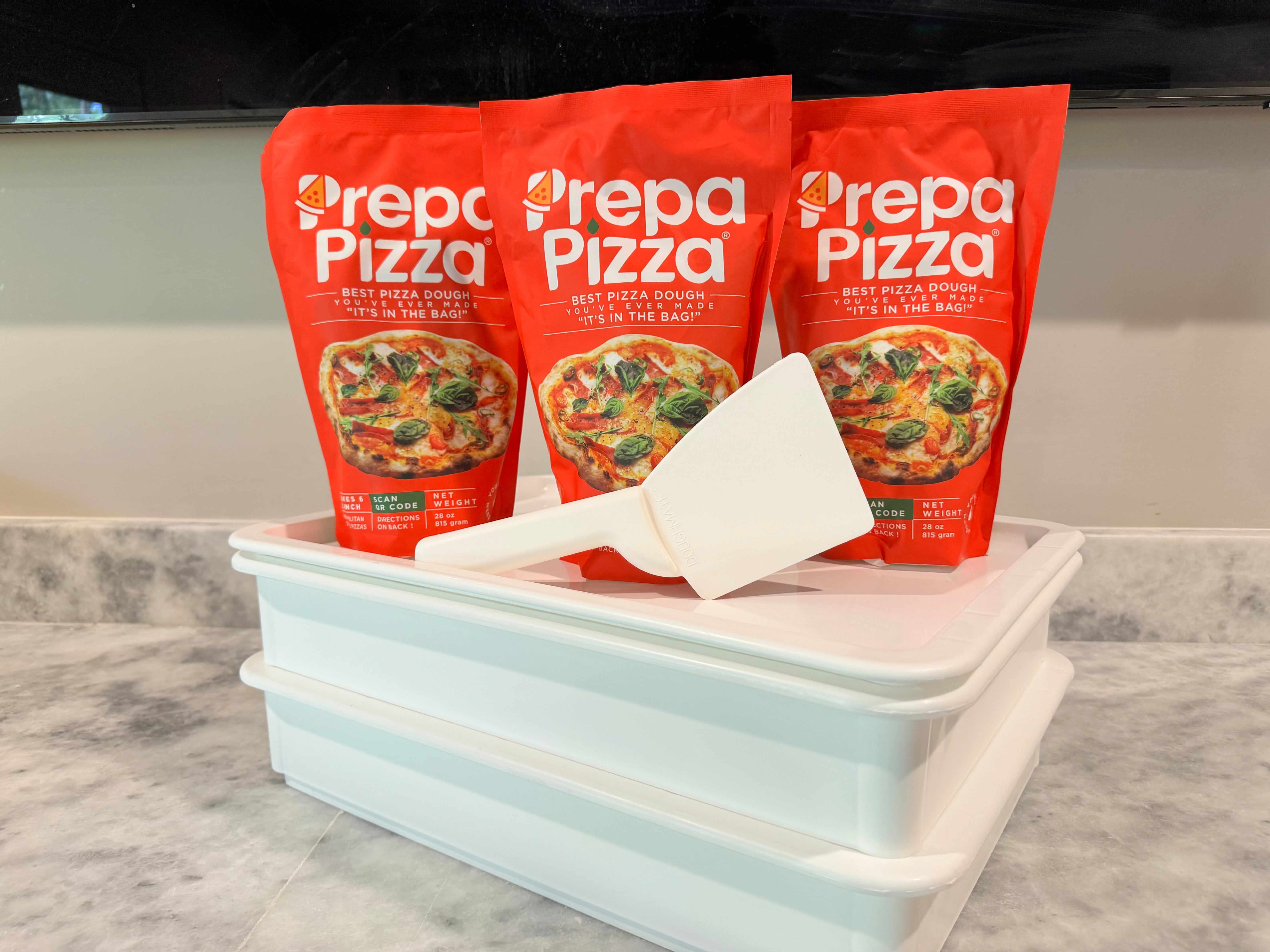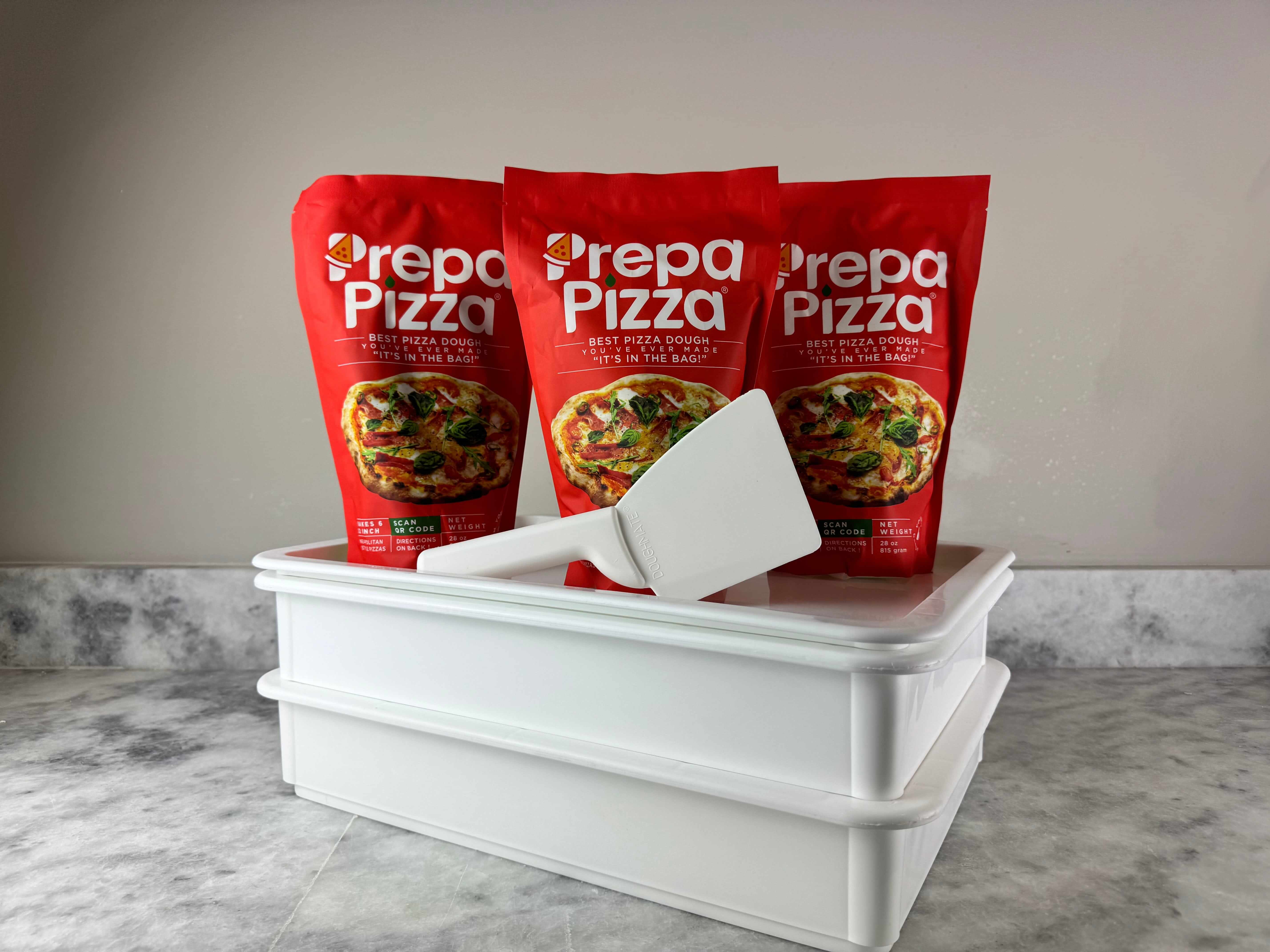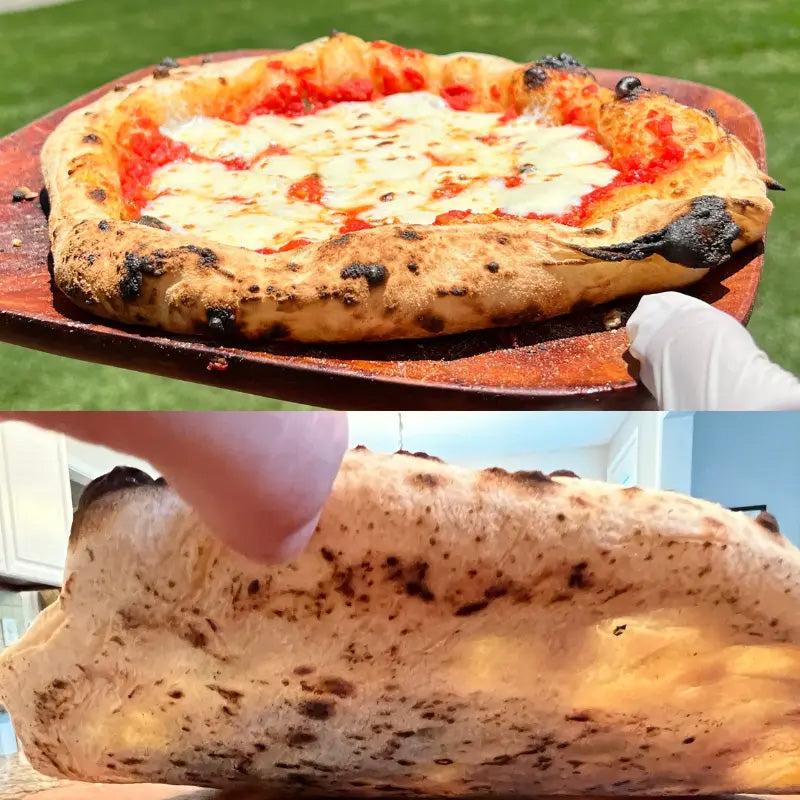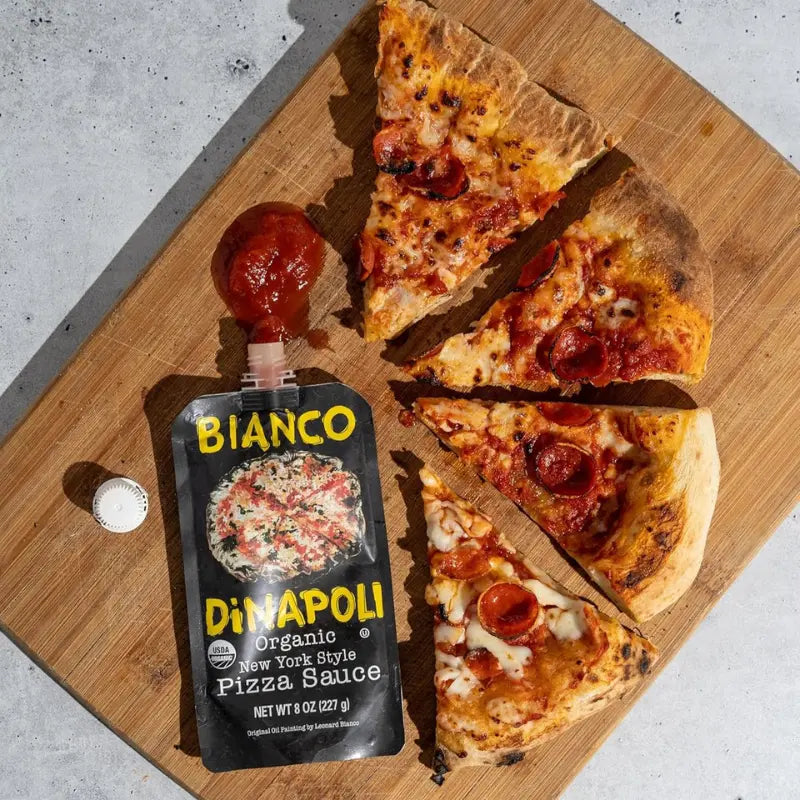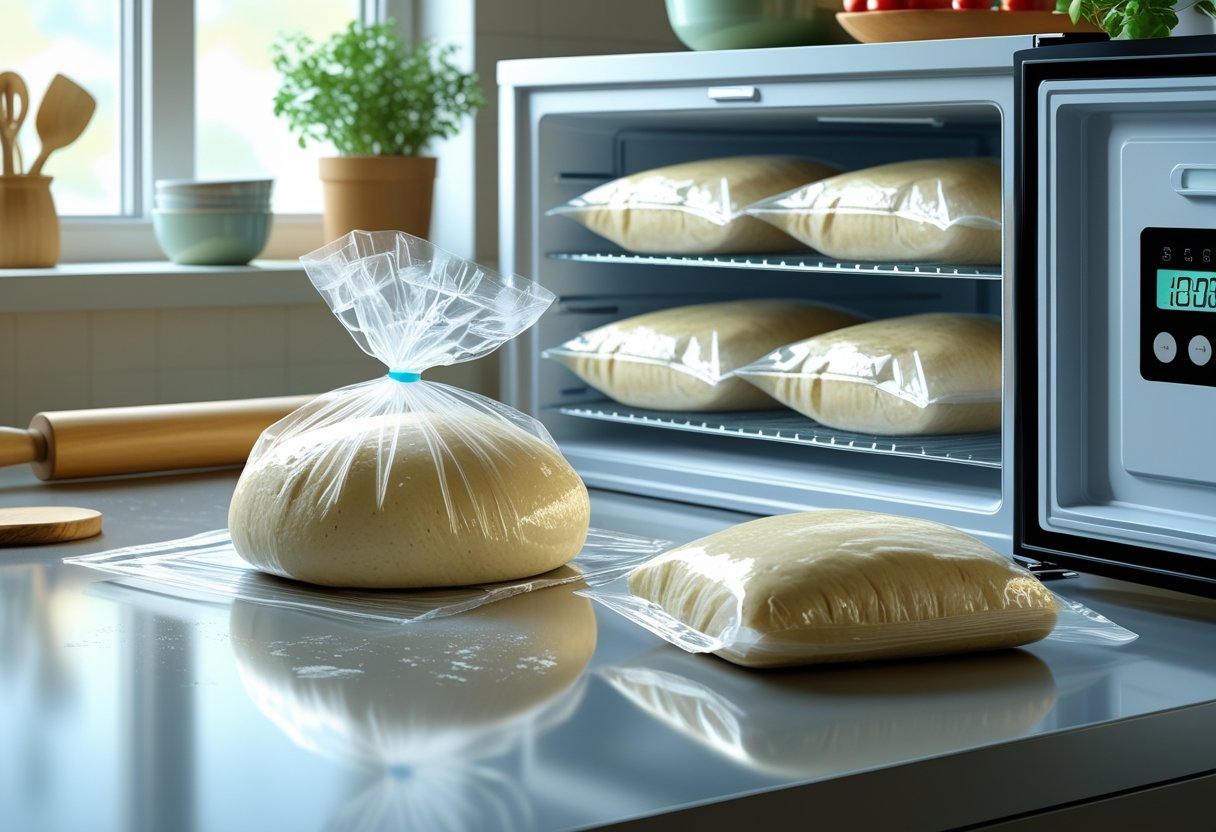
Can You Freeze Premade Pizza Dough Safely? A Clear Guide to Storage and Use
If you're wondering whether you can freeze premade pizza dough safely, the answer is yes. Freezing your dough is a practical way to keep high-quality pizza crust ready whenever you want it. With Prepa Pizza’s premade dough, made from premium ingredients to ensure restaurant-quality results, you can freeze it without worrying about losing texture or flavor. You can explore Prepa Pizza’s dough options here: Prepa Pizza Dough Kit.
Freezing works because the active yeast in the dough goes dormant during the freezing process, preserving its ability to rise properly once thawed. Using Prepa Pizza’s carefully crafted dough means you get consistent results every time, whether you're making a quick meal or prepping ahead for entertaining. This method allows you to enjoy fresh, homemade pizza with minimal effort.
Is It Safe to Freeze Premade Pizza Dough?
Freezing premade pizza dough is a practical way to keep high-quality dough ready for your homemade pizza needs. Using a premium product like Prepa Pizza’s premade dough ensures you start with top-tier ingredients designed to maintain texture and flavor even after freezing. Proper handling and storage will help keep the dough safe and effective for future use.
When you freeze pizza dough correctly, the yeast remains dormant, preserving its ability to rise once thawed. This allows your dough to perform well, whether you’re preparing a classic crust or more artisanal styles. Here’s what you need to keep in mind regarding safety and specific differences between store-bought and homemade dough.
Safety Considerations for Freezing Dough
Freezing pizza dough is safe as long as it’s handled properly from the start. Make sure your dough is stored in an airtight container or tightly wrapped to prevent freezer burn or contamination. Rapid freezing at a consistent temperature of 0°F (-18°C) or lower is recommended to keep the yeast viable while preventing bacterial growth.
Avoid freezing dough that has been left out at room temperature for extended periods. After thawing, consume the dough within 24 hours for best freshness and safety. Refreezing thawed dough is possible but may reduce yeast activity and affect rise quality. For reliable results, use dough designed for freezing, such as the Prepa Pizza premade dough, which is prepared to maintain safety and performance through freezing.
Differences Between Store-Bought and Homemade Pizza Dough
When freezing dough, it’s important to distinguish between store-bought and homemade options. Homemade pizza dough can vary widely in ingredient quality and yeast content, which affects how well it freezes and bakes after thawing. Store-bought dough like Prepa Pizza’s premade dough usually contains consistent, restaurant-quality ingredients designed for optimal freezing and thawing outcomes.
Prepa Pizza premade dough incorporates balanced hydration and fermentation levels that help preserve dough elasticity and flavor after freezing. In contrast, some homemade doughs may lose texture or rise poorly due to inconsistent yeast or improper flour-to-water ratios. If you prepare your own dough, freezing before the first rise can speed future preparation but may require refrigeration beforehand to avoid damage. Using professional-quality frozen dough guarantees a more predictable rise and a better crust for your homemade pizza.
How to Freeze Premade Pizza Dough Effectively
Freezing premade pizza dough correctly preserves its quality and ensures your pizza crust bakes perfectly every time. Using the right tools, wrapping methods, and freezer settings can prevent common issues like freezer burn and loss of texture. Prepa Pizza offers premium quality dough made with restaurant-grade ingredients, making it ideal for freezing with minimal effort. You can explore their detailed Prepa Pizza Dough Kit for a reliable pizza dough recipe to store.
Following precise preparation and storage steps will keep your dough fresh and ready to use whenever you want homemade pizza without the wait.
Required Tools and Preparation Steps
To freeze your pizza dough effectively, start with airtight containers or heavy-duty freezer bags. You need something moisture-proof to avoid freezer burn, which can dry out dough and affect your pizza crust.
Divide your dough into individual portions before freezing, ideally sized for a single pizza (200-250 grams per piece). Form each into smooth balls to maintain gluten structure and prevent sticking.
Lightly coat each dough ball with olive oil to keep the surface moist and reduce ice crystals from forming. Then place dough balls on a parchment-lined tray and freeze them until firm—this prevents them from sticking together inside bags or containers.
Using Prepa Pizza’s premade dough simplifies these steps because their quality dough maintains structure well through freezing and thawing.
Best Practices for Wrapping and Storing
After the dough balls are frozen solid, wrap each one tightly in plastic wrap or use vacuum-sealed bags if available. This double layer protects against air exposure and moisture loss, both critical for preserving dough texture and flavor.
Label each package with the freezing date to track freshness. Most pizza dough, including premium options like Prepa Pizza’s, stays good for up to 3 months in the freezer without significant quality loss.
Avoid leaving excess air inside bags; press out all air before sealing. This minimizes the risk of freezer burn, which can toughen your dough and ruin the final pizza crust.
Store wrapped dough portions flat or upright with space between them to maintain shape and airflow inside the freezer.
Optimal Freezer Placement and Temperature
Set your freezer to a consistent temperature around 0°F (-18°C) to keep your premade pizza dough properly frozen without damaging yeast activity.
Place the dough away from the freezer door to avoid temperature fluctuations caused by opening and closing. Stability helps maintain dough quality during long storage.
For quick access, keep dough portions in a designated area, like a front shelf or drawer. That way, you can thaw only what you need without exposing all dough to warming cycles.
Avoid stacking heavy items on top of dough containers to prevent deformation of dough balls, which might affect crust shape later.
Following these guidelines preserves the quality of Prepa Pizza dough while making your pizza nights easier and faster.
Preventing Freezer Burn and Maintaining Dough Quality
Freezing your premade pizza dough correctly is key to preserving its texture and flavor. Using the right wrapping methods and storage techniques will help you avoid freezer burn and maintain dough quality for up to three months. You can enjoy restaurant-quality pizza anytime with Prepa Pizza’s premade dough, carefully crafted with high-quality ingredients to ensure the best results every time.
Taking care to properly protect your pizza dough before freezing helps lock in moisture and keeps the gluten and yeast active. This way, your dough stays fresh and ready to turn into a perfect crust when you need it.
Double Wrapping Techniques
Double wrapping is essential to protect your pizza dough from freezer burn. Start by tightly wrapping the dough ball in plastic wrap, ensuring no air pockets remain. Then place the wrapped dough into a heavy-duty freezer bag or an airtight container to add a second barrier against cold air exposure.
This method stops moisture loss and prevents the dough surface from drying out or forming ice crystals. For improved results, press out as much air as you can from the freezer bag before sealing it.
Double wrapping with these materials creates a solid defense against freezer burn and keeps your dough’s original texture intact. Prepa Pizza’s premade dough benefits from this care, helping you maintain its premium quality while frozen.
Using Oil or Vacuum Sealing
Applying a thin layer of oil to your dough before wrapping adds a protective coating that locks in moisture. Lightly oil the dough surface with olive oil to help prevent it from drying out during freezing. This step also helps make the dough easier to handle after thawing.
Alternatively, vacuum sealing removes air completely, making it an excellent option to extend storage life and prevent freezer burn. Using a vacuum sealer creates an airtight environment that maintains dough freshness without moisture loss or ice crystal formation.
Both oiling and vacuum sealing methods work well for preserving the elasticity and rise of Prepa Pizza’s premium dough. Use whichever method fits your kitchen setup to maintain dough quality during freezing.
Labeling and Date Tracking
To ensure you use your frozen pizza dough at its best, always label each package clearly with the date it was frozen. This simple step helps you track how long the dough has been in your freezer and prevents the use of dough past its peak quality, usually within three months.
Write the freezing date on masking tape, a sticker, or directly on the bag using a permanent marker. Keep an organized freezer system so you can rotate older packages first and avoid wasting dough.
Consistent labeling paired with proper wrapping means you get top performance from Prepa Pizza’s dough every time you bake. This practice lets you freeze in advance without losing track of your supply or risking freezer burn complications.
Thawing Frozen Pizza Dough for Best Results
Thawing frozen pizza dough properly is key to preserving its texture and flavor. When you use premium premade dough like Prepa Pizza's, careful thawing ensures you maintain the restaurant-quality chew and rise you expect. How you defrost pizza dough directly affects your final crust’s elasticity and ease of handling.
Choosing the right thawing method depends on how much time you have and what tools are available. Each approach offers a balance between convenience and optimal dough condition, which helps you get consistent, delicious results every time you bake. Explore these three common thawing techniques to find the best fit for your needs.
Refrigerator Thawing Method
The most reliable way to thaw frozen pizza dough is by transferring it from the freezer to your refrigerator 8 to 12 hours before use. This slow, controlled thawing prevents the dough from overproofing and helps retain its airy texture.
Keep the dough wrapped in its original packaging or place it in an airtight container to prevent drying out or contamination. When thawed, allow the dough to rest at room temperature for about 30 minutes before shaping.
Using Prepa Pizza’s premade dough, this method ensures your dough retains its premium quality and handles easily when prepared for baking. This approach takes planning but yields the best results for crust elasticity and flavor retention.
Counter Thawing for Quicker Defrosting
If you need to thaw pizza dough faster, you can place it on the counter at room temperature, wrapped loosely to retain some moisture. Allow about 2 to 3 hours for the dough to defrost completely.
Check the dough frequently to avoid overproofing, which can cause excessive rising and weaken the gluten structure. Once soft and pliable, give the dough a gentle stretch to confirm it has thawed evenly.
This method works well with Prepa Pizza’s premium dough but requires close attention to timing. It offers a good balance between speed and maintaining dough quality for your homemade pizzas without compromising texture.
Water Bath Thawing Tips
For the quickest thawing, submerge the wrapped dough in cold water. Use a watertight bag to prevent water from contacting the dough directly.
Change the water every 30 minutes to keep it cold; the dough should thaw in about 1 to 2 hours using this method. This technique speeds up defrosting considerably but requires careful monitoring.
Once thawed, let the dough rest at room temperature for 15 to 20 minutes before use to help re-activate the yeast and ease shaping. This method is effective for last-minute pizza plans when using Prepa Pizza’s dough without sacrificing quality.
Using and Baking Thawed Pizza Dough
When you thaw premade pizza dough like Prepa Pizza’s dough kit, timing and technique directly affect your final crust. Proper rising, gentle handling, and correct baking ensure your homemade pizza dough transforms into a fresh, restaurant-quality pizza crust.
You’ll want to give your dough enough time to rise again after thawing, shape it carefully to maintain its texture, and bake it at the right temperature for the best crust.
Allowing Time for Proper Dough Rise
Once thawed, your pizza dough must rest and rise at room temperature before shaping. This typically takes 1 to 2 hours, depending on ambient temperature. The yeast in the dough will reactivate, creating bubbles that give the crust its airy texture.
Avoid rushing this step because cold dough that hasn’t fully risen can lead to a dense crust. For Prepa Pizza’s quality dough, letting it rise properly ensures the same light, flavorful base you expect from fresh homemade dough.
Cover your dough loosely with plastic wrap or a damp towel to prevent drying out while rising.
Shaping and Handling After Thawing
Handle your dough gently to maintain the gas bubbles developed during rising. Use your fingers or palms to stretch it rather than rolling pins, which can deflate the dough and lead to a tough crust.
If the dough resists stretching, let it rest for 10-15 minutes to relax the gluten. Working in small increments helps preserve the elasticity important for that desired homemade texture.
Using Prepa Pizza dough, you benefit from a dough that holds up well during shaping due to its balanced hydration and quality ingredients.
Baking for Fresh Pizza Crust Texture
For the best crust texture, bake your pizza on a very hot surface—ideally 475°F (245°C) or higher—to mimic restaurant ovens. Preheat your oven with a pizza stone or steel to ensure even heat distribution.
Bake 10-15 minutes or until the crust is golden brown and the toppings are fully cooked. Avoid overcrowding your pizza with heavy toppings; this can inhibit proper cooking and make the crust soggy.
Following these baking parameters with Prepa Pizza’s premade dough ensures a crisp outside and chewy inside, consistent with a premium homemade pizza experience.
Storage Duration, Troubleshooting, and Alternatives
When you freeze premade pizza dough like Prepa Pizza’s premium quality dough, proper storage and handling determine how well it keeps and performs. You'll need to understand how long frozen dough lasts, recognize common problems you might encounter, and consider options if freezing isn’t ideal for your needs.
How Long Frozen Dough Lasts
Frozen pizza dough can be stored for up to 3 months without significant loss of quality. Prepa Pizza’s dough, made with quality ingredients, maintains its texture and flavor best when tightly wrapped in plastic wrap and placed inside an airtight freezer bag.
Freezer burn is a common risk if the dough is exposed to air. It causes dryness and off textures, so sealing dough well reduces this risk. For best results, label your dough with the freezing date and use it within the 3-month window.
When thawing, move dough to the refrigerator for 12–24 hours before bringing it to room temperature. This gradual process helps preserve the dough’s elasticity and rise capability.
Common Issues with Frozen Pizza Dough
If you notice your dough is sticky or doesn’t rise properly after thawing, improper freezing or thawing is often the cause. Dough that wasn’t wrapped tightly may have freezer burn, leading to dry spots and compromised texture.
Over-proofing before freezing can cause the dough to ferment too much, resulting in a dense crust after baking. Make sure to freeze the dough after it has just completed the first rise.
If the dough is too sticky after thawing, lightly flour your hands and work surface. Avoid adding excessive flour, which can make the crust tough. Allowing the dough enough time to warm up before stretching also helps prevent tearing and uneven baking.
Alternatives to Freezing Premade Pizza Dough
If freezing isn’t your preferred method, refrigerating Prepa Pizza dough for up to 3 days is a simple alternative. Keep it sealed tightly to prevent drying out and place it in the coldest part of your fridge.
Another option is to portion and bake small pizza crusts ahead of time. Once baked, cool them completely and freeze the crusts individually to reheat later. This avoids texture changes from freezing raw dough.
You can also opt for meal prepping dough batches to use fresh over several days. This approach allows you to enjoy the product’s restaurant-quality quality without concerns about freezer burn or thawing issues.
For details on the product, see Prepa Pizza’s premade dough kit.
Frequently Asked Questions
Freezing premade pizza dough can help you have fresh dough ready whenever you want to cook. Proper preparation before freezing and correct thawing afterward are important to maintain the dough’s texture and flavor.
Prepa Pizza offers premium quality premade dough made with restaurant-grade ingredients, designed for both convenience and superior taste. You can find their Prepa Pizza Dough Kit for easy access to top-quality dough that freezes well.
How should pizza dough be prepared before freezing for optimal results?
You should complete the dough's first rise before freezing. Divide it into portions, wrap each piece tightly in plastic wrap, then place them in an airtight freezer bag to prevent freezer burn.
What is the maximum duration for storing pizza dough in the freezer?
Pizza dough is best used within 2 to 3 months of freezing. Beyond this timeframe, the dough may lose some texture and flavor, especially if not well wrapped.
Can already-risen pizza dough be frozen without affecting its quality?
Yes, freezing dough after it has risen once is ideal. This preserves the yeast activity and promotes better texture after thawing and baking.
Are there any special considerations for freezing dough containing yeast?
Make sure the dough is properly wrapped to avoid drying out. Yeast remains active in the freezer but will be dormant until thawed and warmed, so slow thawing helps maintain dough quality.
What is the best practice for thawing frozen pizza dough?
Thaw the dough slowly in the refrigerator overnight. After thawing, allow it to come to room temperature and rise again if needed before shaping and baking.
Should pizza be baked before freezing or can it be frozen uncooked?
You can freeze pizza dough uncooked, which allows you to prepare fresh crusts when ready. Baking before freezing is an option but changes storage needs and reheating methods.




